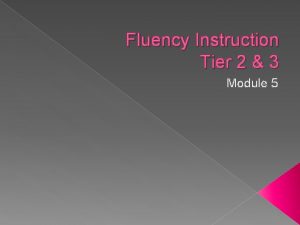MaskerFirst Advantage in Cued Informational Masking Studies a

- Slides: 1

Masker-First Advantage in Cued Informational Masking Studies a Richards , a Huang , Virginia M. Rong and Gerald Kidd (a) Department of Psychology, University of Pennsylvania (b) Communication Disorders and Hearing Research Center, Boston University Previous informational masking studies have shown that a preview of an upcoming masker stimulus provides a release from informational masking whereas a preview of the signal-plus-masker stimulus does not. In the following experiments we asked whether this asymmetry remained when the cue and trial intervals were random, i. e. when a same/different two-interval, forced choice task was used. b Jr. Yes/No Trials Prop "int" resp re. Prop "int" trials Proportion Correct Yes/No Task 1. 00 0. 90 0. 80 0. 70 0. 60 0. 50 0. 40 <M> 1. 6 1. 4 1. 2 1. 0 0. 8 0. 6 0. 4 Sig Interval No. Sig Interval 1 (66%) <SM> Trial Types Experiment 1 Figure 2 <M M> – masker in both intervals Figure 2 plots the proportion of correct responses for each trial type. The filled squares shows the averaged results. Performance levels are higher when the masker was in the first interval than when the signal-plus masker was in the first interval. Additional analysis indicated that three of the five observers were biased in their responses – Obs 1 and 2 over-responded “same” and Obs 5 overresponded “different”. These results suggested significant order effects might be present in informational masking studies. In this experiment we examined order effects and response biases for the detection of a tone added to randomly drawn maskers using three procedures: Yes/No, 2 IFC, and 3 IFC Methods: <SM M> trial • Observers 1 -4 from experiment 1 • Random maskers for each trial; same masker across intervals • 3 -down, 1 -up adaptive adjustment in signal level 1. 00 0. 90 0. 80 0. 70 0. 60 0. 50 0. 40 <M, M, SM> <M, SM, M> <SM, M, M> 5 Signal Strength (Percent Correct) 6 (91%) Interval 1 Interval 2 2 3 4 5 Signal Strength (Percent Correct) 6 (94%) 3 IFC Trials Prop "int" resp re. Prop "int" trials <M SM> trial Methods: Results: <SM, M> 1 (66%) Trial Types Experiment 2: 4 1. 6 1. 4 1. 2 1. 0 0. 8 0. 6 0. 4 3 IFC Task <SM M> – signal-plus-masker followed by masker • five observers • 6 -component, randomly drawn masker • Random masker for each trial; same masker across intervals • 1000 Hz fixed-level signal • 1500 trials per observer <M, SM> Proportion Correct <M SM> – masker followed by signal-plus-masker Frequency <SM SM> – signal-plus-masker in both intervals <SM SM> trial Prop "int" resp re. Prop "int" trials <M M> trial Proportion Correct Observers indicated whether the two intervals of a 2 IFC trial had the same vs. different stimuli. The stimulus was either a masker or a signal-plusmasker. The four potential trial types are depicted in Figure 1: 3 2 IFC Trials 2 IFC Task 1. 00 0. 90 0. 80 0. 70 0. 60 0. 50 0. 40 2 1. 6 1. 4 1. 2 1. 0 0. 8 0. 6 0. 4 1 (61%) Interval 1 Interval 2 Interval 3 2 3 4 5 Trial Types Signal Strength (Percent Correct) Figure 3 Figure 4 6 (94%) Results: Time Figure 1 Figure 3 shows proportion correct, averaged across signal levels, for trial types encountered in the yes/no, 2 IFC, and 3 IFC conditions. The filled squares show group means. Yes/No: Proportion correct scores were not reliably different on masker and signal-plus-masker trials 2 IFC: Proportion correct scores were lower for <M SM> than <SM M> trials 3 IFC: Proportion correct scores were lowest for <M, M, SM> trials Figure 4 plots the data of Figure 3 as responses biases. The ordinate is the number of “interval x” responses relative to the number of “interval x” trials. A ratio of 1 indicates no response bias. Averaged ratios are shown. The abscissa is signal strength. Yes/No: There is a slight tendency to respond “no signal” 2 IFC: Observers over respond “interval 1 has the added signal” 3 IFC: Observers tend to indicate that (a) interval 1 has the added signal and (b) interval 3 does not have the added signal. Response to the middle interval was unbiased. Summary and Discussion Past work has shown that a pre-trial preview of the masker provided release from informational masking but a preview of the signal-plusmasker did not. In a similarly vein, for 2 IFC, same/different task observers were more accurate when the masker was in the first interval. In contrast, for 2 IFC and 3 IFC trials, observers were biased to indicate that the signal was in the first interval. In these informational masking studies, observers’ decision processes appeared to depend on the paradigm used. More important, response biases were obtained in most of the paradigms tested. Acknowledgements: This work was supported by grant R 01 DC 02012 and R 01 DC 04545 from the National Institutes of Health.

